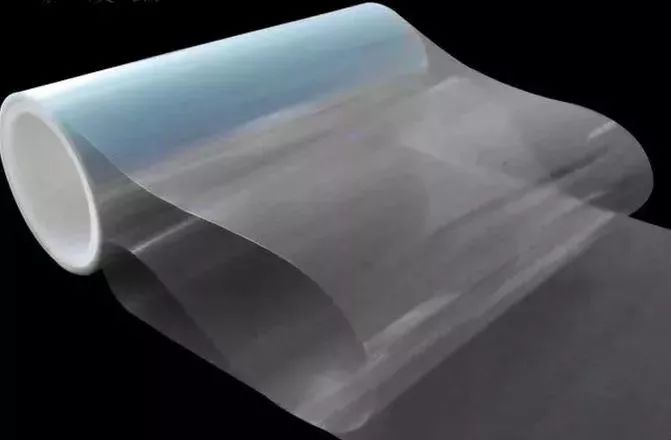Análisis de los problemas de calidad habituales de las películas de PET
xinst06 de mayo de 2020
Análisis de los problemas de calidad habituales de las películas de PET
Película de PET, color amarillento o grisáceo o rayas amarillentas
La película de PET, especialmente después de enrollarla en un eje, se ve amarilla o gris. Se puede ver a simple vista. Si hay una barra amarilla, debe desplegar la película u observar la luz. O puede identificarse mejor si se extiende sobre una base blanca.

Reason analysis: The reason of gel point, yellow point and black point is the same. The yellowing is due to the poor thermal stability of the resin, or more air enters the extruder. When the resin generates a large amount of acetaldehyde during thermal oxidation .Because acetaldehyde reduces antimony trioxide to antimony, the film (resin) is grayed out. The appearance of yellow bars is mostly when the filter is replaced, or after the resin is replaced. Some people may stay in the machine for too long. Some of the resins will be yellowed, and after these yellowed resins are formed, it is impossible to mix them well with normal melt plasticization, so yellow bars appear.
Static electricity is too large
One characteristic of static electricity is adsorption. Rubbing the surface of the PET film, or peeling off the film roll, or when the film is running at high speed, static electricity will form. If there is dust, paper dust, hair, etc. near the film at this time, it may be adsorbed and affect the quality of the product film (especially the capacitor film). When the static electricity is serious, it may also cause fires, electricians, and other accidents. Known polyester The static electricity of the film is too large, which has a bad effect on the subsequent processing and processed products. For example, the static electricity of the bonded PET film can be set at about 500v with an electrostatic tester. The measurement shows that the static electricity on both sides of the film is also different.
Reason analysis: PET film is a polar electrical insulation material, which makes the charge generated by friction, shearing and other effects can not be transferred, and accumulates on its surface to form static electricity. The electrostatic size of PET film and the electrical properties of the resin body. Application of additives. As well as the film-making process. Because they directly affect the structure and performance of the film surface / surface, such as the crystallinity of the surface layer, the number of polar groups and their orientation, and the size of the contact area between the surfaces of the two films, etc. factors that affect the formation of static electricity. Based on this, it can also explain why the static electricity on both sides of the film is different.
PET film Solution:
(1) Find out the reasons from the resins, additives and processes and solve them in a targeted manner;
(2) Use static eliminators in film making and film post-processing;
(3) A conductive coating on the surface;
(4) Use antistatic agent / resin.
The bonding strength of printing, compounding and aluminum plating is not enough
For the boxing strength of printing, laminating, vacuum aluminizing, usually with self-adhesive tape as the inspection side, there are three types of full peeling, partial peeling and non-peeling. The first two types are not strong enough.
Análisis de la razón: la resistencia entre capas de la película de PET, la tinta y la mezcla de visón está sujeta a la tensión superficial de la película de PET. La tensión superficial de la película de PET sin tratar es de 42 ~ 48 N / S, que no puede cumplir con los requisitos de resistencia de adhesión con el adhesivo de tinta. Por lo tanto, es importante tomar algunas medidas como el tratamiento corona para aumentar la tensión superficial en la producción.

